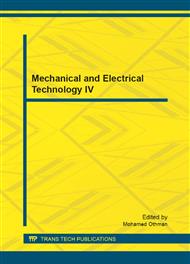p.2522
p.2527
p.2531
p.2536
p.2541
p.2546
p.2551
p.2556
p.2562
Performance Analysis of Wet Compression Process under Critical Conditions of Water Injection
Abstract:
In wet compression process water is injected at an inlet of compressor and continuous cooling occurs due to evaporation of water droplets during the compression process of air, which can save the compression work and enhance the performance of gas turbine system. In this work, performance analysis of the wet compression process is carried out under the critical conditions of water injection which are defined as the maximum water injection which can be evaporated completely inside the compressor. For various ambient conditions the important variables of wet compression process such as water injection ratio, temperature-averaged polytropic coefficient, compressor outlet temperature, and compression work are estimated under the critical injection conditions. Parametric studies show that compression work decreases with ambient temperature, however, the reduction ratio of compression work relative to dry increases with ambient temperature.
Info:
Periodical:
Pages:
2541-2545
Citation:
Online since:
November 2012
Authors:
Keywords:
Price:
Сopyright:
© 2012 Trans Tech Publications Ltd. All Rights Reserved
Share:
Citation:


